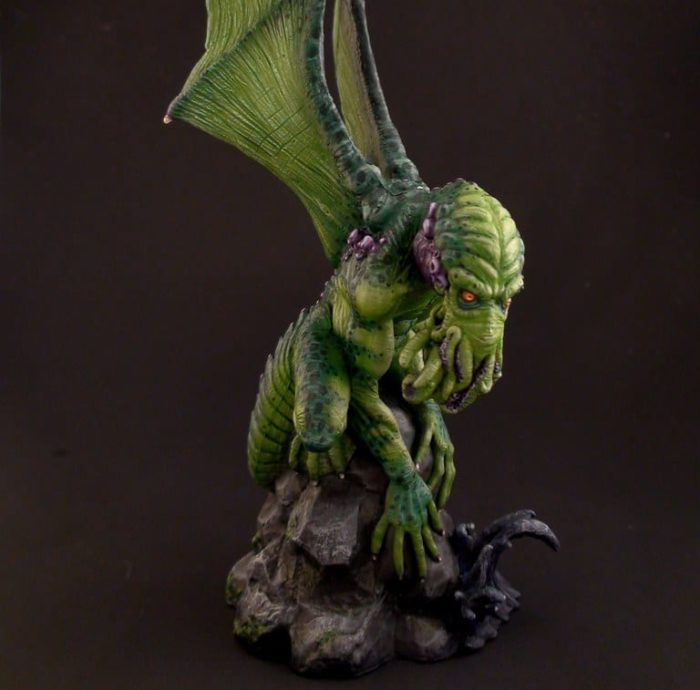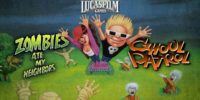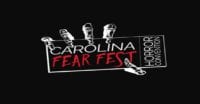This article, written and read by Dean Delp, is now available on Horror Obsessive Radio.
If you’re on this website, you’ve probably heard of H.P. Lovecraft. But just because you’ve heard of him doesn’t mean you know him, and it certainly doesn’t mean you’ve read him.
If you fall into the latter category, there may be several reasons. It could be that you simply haven’t gotten around to him yet. Maybe you don’t know enough about him to know why he’s worth your time. Or…as I suspect is probably the case, you just don’t know where to begin.
If so, this article is for you. Welcome to a Beginner’s Guide to H.P. Lovecraft.
Howard Phillips Lovecraft

Lovecraft was born in Rhode Island during the summer of 1890 and died in March of 1937 at the age of 46 of intestinal cancer. [1] He spent the second half of his regrettably short life as an active writer but received exceptionally few accolades until after his death.
The course of his days were most often marked by misfortune, illness, and tragedy. When Lovecraft was eight years old, his father suffered a psychotic breakdown and was committed to an asylum for five years until his death. Lovecraft’s mother would likewise die in the same asylum when her own mental health deteriorated, and she became hallucinogenic. [2]
Lovecraft teetered on the edge of suicide for much of his life and suffered recurring bouts of extreme anxiety, migraines, insomnia, and muscle spasms. He also was plagued by vivid nightmares, much of which would inspire his work. [3]
Still, he was undoubtedly a prodigy. According to family accounts, Lovecraft was reading, speaking, and writing proficiently by the age of three. Taking an intense interest in both science and mythology, he began re-writing Greco-Roman stories with his own twists as early as age seven. [4]
By the time he died, he had written 65 short stories, a near infinity of poems, and scores of miscellaneous texts. His fiction is what he is most known for today and stands almost universally lauded within the genre. Indeed, a very strong case can be made that Lovecraft invented a genre all his own. A category we call Cosmic Horror today.
His Work

Lovecraft’s fiction can essentially be divided into three categories: The Cthulhu Mythos, The Dream Cycle, and what I will call Unincorporated Stories.
Cthulhu is his best-known figure, and if you’ve spent any substantive time on the Internet, you’ve undoubtedly crossed paths with the octopoid monstrosity before.
You may also guess by the names of the categories listed, that Lovecraftian stories are connected. Mythos and Cycle are juxtaposed with Unincorporated.
This is because the majority of Lovecraft’s work operates in a similar style to the Marvel Cinematic Universe. Characters and events are all taking place within the same world and can be self-referential. While there is some disagreement about which stories belong in which category, this is only the case with a few specific works.
The Cthulhu Mythos is a set of stories where various characters discover unspeakable facts about the Elder Gods who rule both existence and unreality. Cthulhu is the one chiefly mentioned, but other unthinkable deities are referenced too. These stories often pit the protagonist against secret cults and indescribable monsters.
The Dream Cycle is a highly abstract anthology of tales depicting an ethereal world that can only be journeyed to through dreams. There are ghostly castles, fiendish spectres, and countless fantastical settings that take the reader on a mystical odyssey through evanescent beauty and esoteric evil.
The Unincorporated Stories are exactly what they sound like and are simply anything that doesn’t directly fall into the Cthulhu Mythos or the Dream Cycle. These stories actually make up the majority of Lovecraft’s work, though many of them go unread in favor of more famous pieces.
If you’re looking to begin reading Lovecraft, definitely start with the Cthulhu Mythos. It’s his most well-known for a reason. There are certainly great pieces in the Unincorporated Stories and the Dream Cycle, but Cthulhu will undoubtedly give you the most bang for your buck.
It’s also a good test to determine if the work of Lovecraft is for you. If you don’t like the Cthulhu stories, there’s likely no reason for you to bother with the others.
How to Start

Lovecraft stories vary in length tremendously. Some last only around 10 to 15 minutes, whilst others can stretch for as long as four hours.
In my opinion, the two best pieces, to begin with, are The Nameless City and Dagon. I’d recommend them in that order too. The first is around 30 minutes long, while the second is only about 15. Both pieces are short, easy to read and give a scrumptious sampling of Lovecraft’s flavor. The Nameless City covers the story of an explorer delving into some ancient ruins while Dagon gives the harrowing account of a sailor stranded on a mysterious island. By the end of both stories, the protagonists will have made shocking and grotesque revelations, a common theme in Lovecraft’s work.
If you find them both to be stimulating, which you probably will, then it’s time to take on your first real story.
The Call of Cthulhu must invariably come next and serves as the true test. The reality is that while Lovecraft’s work is genius, it won’t be enjoyed by everyone. This is mostly for reasons of style, pacing, and linguistics. Lovecraft stories are almost always slow, loquacious, and vastly over-decorative. For some people, there simply won’t be enough action to keep them interested throughout. I’ve also seen people get stuck in the lengthy descriptions to the point of losing the plot or simply struggle with the uncommon vocabulary.
Anyone can get through The Nameless City, but The Call of Cthulhu is triple the length. It describes in great detail the journey of a man who discovers the story of his relative’s death and uncovers an ancient cult of terrible power. This is classic Lovecraft and displays all his signature styles and techniques.
After finishing it, you will most likely exhibit one of two reactions. The first will be disinterest and boredom. The second will be a strangely growing hunger to know more.
If you fall into the second category, then the world of H.P. Lovecraft is open to you.
Take on Shadows over Innsmouth and The Dunwich Horror next. Both are fantastic stories and even longer than The Call of Cthulhu. If you like Lovecraft, then you want to give him the largest span of time in which to develop. The longer the story, the better the payoff at the end.
This leads us to what is perhaps his greatest achievement. At the Mountains of Madness is his longest, though certainly his best story at nearly five hours. It has all the best qualities of his work and, to my way of thinking, is a true testament to the power of the slow burn. But now that you’re quite literally at the peak of the mountain, where do you go from here?
What’s Next?

At this point, if you decide you still want more, then congratulations on being a person of extreme literary taste.
I’d recommend finishing up the Cthulhu Mythos and hitting some of the best Unincorporated Stories like Herbert West Reanimator. Cover the Dream Cycle last. It is immensely abstract and lacks much of the raw disturbing power present in his other stories.
The Dream Cycle is still very good, but it takes a certain kind of mindset to enjoy it. Even if you love the Cthulhu stories, it’s no guarantee that the Dream Cycle will be just as fun for you. The Doom that Came to Sarnath and The White Ship are good entry points to put your toes in the water here.
As I mentioned before, there is some disagreement about the placement of certain stories, but several decently authoritative lists are available to guide you. The H.P. Lovecraft Fandom Wiki has a great list of stories within the Cthulhu Mythos and the Dream Cycle, in addition to a complete list of works.
Lastly, as I stated in my previous review of Robert W. Chamber’s The King in Yellow, my favorite narrator, Ian Gordon, has brilliant audio versions of more than 50 H.P. Lovecraft stories available on his YouTube channel HorrorBabble. Try these at night with a good pair of headphones for the best results.
So, with all that said…
Bon appetit!
Works Cited
[1] “15 Mar 1937, 2 – The Boston Globe at Newspapers.com.” Newspapers.com. Accessed April 26, 2021.
[2] Joshi, Sunand Tryambak. Essay. In I Am Providence: the Life and Times of H.P. Lovecraft, (New York, NY: Hippocampus Press, 2013), p. 22–23
[3] Joshi, p. 34
[4] Joshi, p. 38




If you enjoyed my perspective here on Horror Obsessive, then please consider listening to my Podcast on a very different subject.
I’m the host of Modernist Monastery, it’s about the connection between ancient philosophical or spiritual practices and modern scientific research. It’s also a show about how to apply that connection to your everyday life
https://modernistmonastery.transistor.fm/